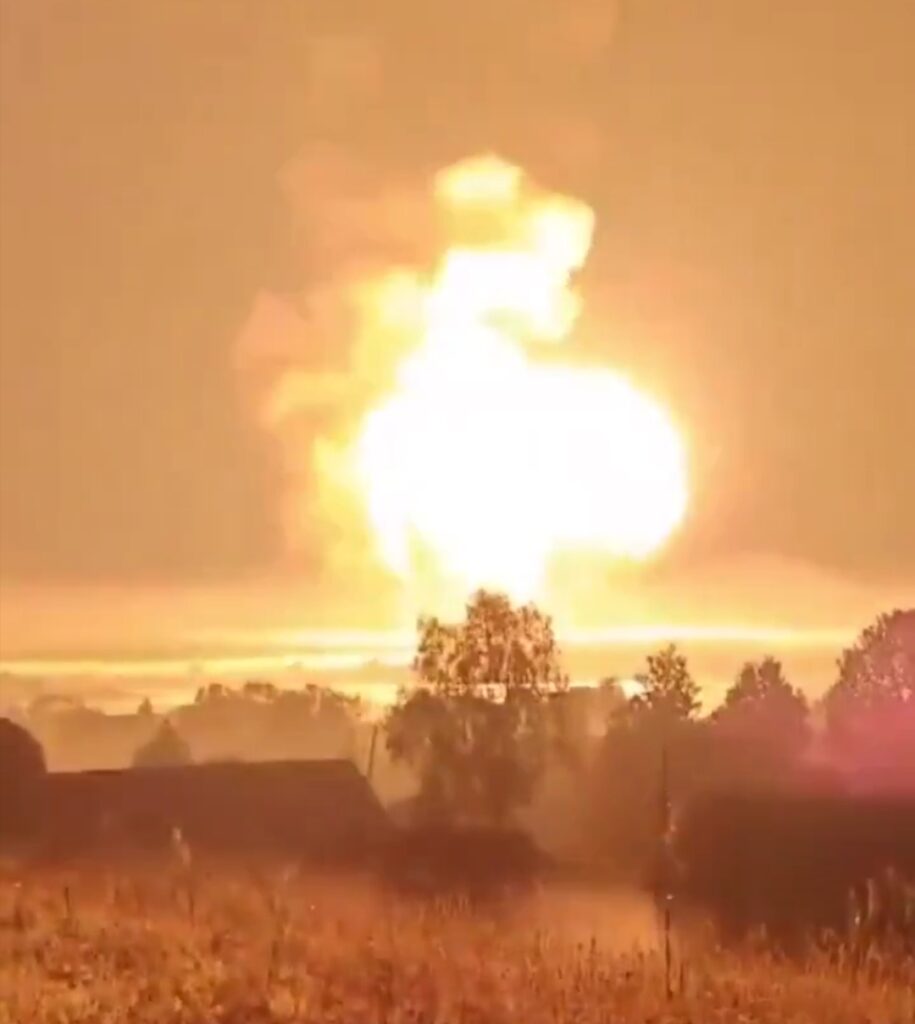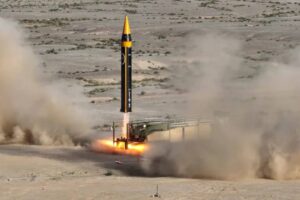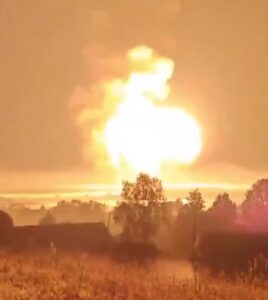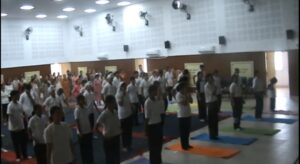Iran Allegedly Shifts Nuclear Centrifuges Amid Fears of U.S. Attack on Fordow: Fact or Fiction?
Samba Times Special

June 22, 2025
Recent claims circulating on TV Channels & social media platforms, particularly X, suggest that Iran may have relocated its nuclear centrifuges and other critical equipment from the Fordow nuclear facility in anticipation of a potential U.S. attack on June 19–20, 2025. These claims emerged in the context of escalating tensions in the Middle East, with U.S. President Donald Trump announcing on June 21, 2025, that U.S. forces conducted airstrikes on three Iranian nuclear sites—Fordow, Natanz, and Isfahan. But did Iran preemptively move its nuclear assets to safeguard its program? Read this article
Background: U.S. Strikes and Iran’s Nuclear Program
On June 21, 2025, President Trump confirmed that U.S. B-2 stealth bombers, equipped with 30,000-pound “bunker-buster” bombs, and Tomahawk cruise missiles targeted Iran’s key nuclear facilities, including the heavily fortified Fordow site, which is buried deep under a mountain near Qom. The strikes were described as a response to Iran’s nuclear ambitions, which the U.S. and Israel claim are aimed at developing nuclear weapons, though Iran insists its program is for civilian purposes.
Fordow is a critical component of Iran’s nuclear infrastructure, housing around 2,700 centrifuges, including advanced IR-6 models, capable of enriching uranium to 60% purity—a level close to weapons-grade. The facility’s subterranean design makes it difficult to destroy, requiring specialized U.S. weaponry like the Massive Ordnance Penetrator (MOP).
The Claim: Iran’s Preemptive Relocation
s9me TV Channels showing satellite pictures of 20 trucks near Fordow nuclear fascility in the intervining days of 19th & 20th June assert that Iran anticipated the U.S. attack and moved its centrifuges and other equipment from Fordow to secure locations, possibly even to allied countries. Sone posts claimed, “Iran also claims Fordow was ‘emptied and evacuated’ which likely means the centrifuges were transferred to a new location,” while another stated, “Iran has moved all the important things and the reactor in the rest of the reactors to a safe place.”
These claims suggest Iran took proactive measures between June 19 and 20, 2025, following earlier Israeli strikes on Iranian nuclear sites and amid growing speculation of U.S. involvement.
Examining the Evidence
- No Official Confirmation: As of June 22, 2025, no credible news outlet or official statement from Iran’s Atomic Energy Organization (AEOI) or the International Atomic Energy Agency (IAEA) has confirmed the relocation of centrifuges or equipment from Fordow. Iran’s state-run IRNA news agency acknowledged the U.S. strikes on Fordow, Natanz, and Isfahan but described them as “lawlessness” and vowed to continue its nuclear program, without mentioning any preemptive evacuation.
- IAEA Reports: IAEA Director General Rafael Grossi reported on June 17, 2025, that Israeli strikes had damaged Natanz’s aboveground facilities and disrupted power supplies, potentially affecting centrifuges. However, no IAEA statements indicate that Fordow’s centrifuges were moved before the U.S. attack. On June 18, the IAEA noted that two centrifuge production facilities in Tehran were hit by Israeli strikes, but this does not directly support claims of equipment relocation from Fordow.
- Logistical Challenges: Relocating thousands of centrifuges, which are delicate and require specialized infrastructure, in just 48 hours (June 19–20) would be a monumental task. Fordow’s underground design, while protective, also complicates rapid evacuation. Experts suggest that Iran may have dispersed some enriched uranium stockpiles to other sites, but moving operational centrifuges is less feasible.
- X Posts as Inconclusive: The claims on X lack verifiable sources and appear speculative. Social media posts often amplify unconfirmed rumors, especially during conflicts. Without corroboration from Iranian officials or independent observers, these assertions remain unproven.
- Iran’s Prior Actions: On June 12, 2025, Iran announced plans to replace older IR-1 centrifuges with advanced IR-6 models at Fordow and to establish a new enrichment center at a “secure location” in response to an IAEA resolution. This suggests long-term planning to bolster its nuclear program, not an emergency evacuation. The timing of this announcement, a week before the U.S. strikes, indicates Iran was preparing for escalation but does not confirm specific actions on June 19–20.
Expert Analysis
Nuclear experts argue that even if Fordow was damaged, Iran’s nuclear program would not be crippled. Natanz, with its larger centrifuge capacity, is a more significant loss, and Iran’s stockpile of 60% enriched uranium could still be enriched to weapons-grade at smaller, undeclared sites. A national security expert cited by ABC News noted that Iran’s knowledge and experience allow it to rebuild, even if centrifuges are destroyed.
Some analysts speculate that Iran may have expanded Fordow’s underground complex to include hidden storage for nuclear technology, which could survive an attack. However, this is a long-term strategy, not evidence of a last-minute relocation.
Iran’s Response and Implications
Iran’s AEOI condemned the U.S. strikes as an act of aggression but insisted its nuclear program would persist. If Iran did move equipment, it could indicate a strategy to preserve its nuclear capabilities amid ongoing Israeli and U.S. pressure. However, the lack of concrete evidence suggests the claims may be part of a broader information war, with Iran potentially exaggerating its preparedness to project resilience.
The U.S. strikes have escalated the Israel-Iran conflict, with Trump warning of further attacks if Iran retaliates. The destruction of Fordow, if confirmed, would delay Iran’s enrichment capacity, but experts caution that Iran’s nuclear know-how remains intact.
Conclusion
As of June 22, 2025, there is no verifiable evidence that Iran shifted its nuclear centrifuges or equipment from Fordow on June 19–20, 2025, to preempt a U.S. attack. Claims on X appear speculative and lack corroboration from official or independent sources. While Iran has taken steps to protect its nuclear program, such as planning new enrichment sites, the logistical and temporal constraints make a rapid evacuation of Fordow unlikely. The situation remains fluid, and further IAEA inspections or satellite imagery may clarify the extent of damage and Iran’s response.
Disclaimer: This article is based on information available as of June 22, 2025, and reflects the inconclusive nature of data available





